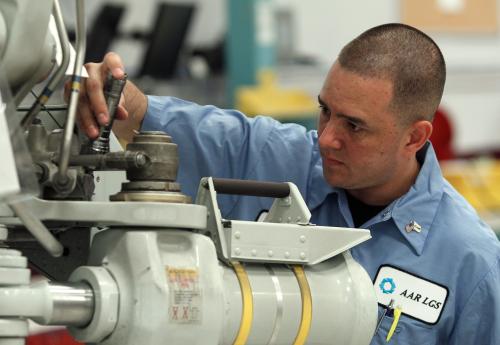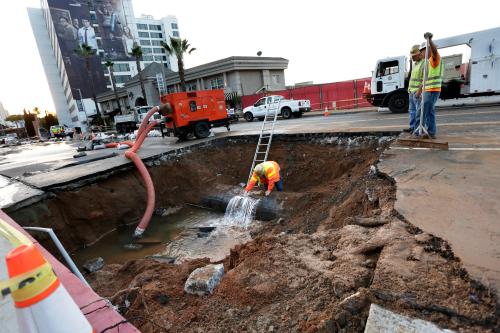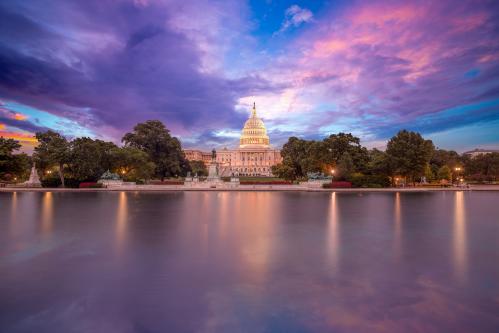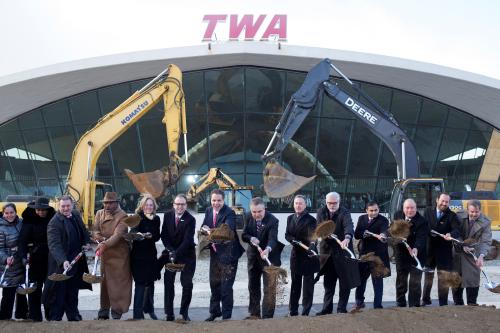Infrastructure stood out as a major priority during the presidential election and will likely attract even more attention when the Trump administration takes office in 2017, despite lingering uncertainty on what specific policies will take shape. Fortunately, though, many cities and states got a head start on election day by passing a variety of infrastructure ballot measures.
Relying on ballot measures to finance local infrastructure projects isn’t exactly new. Pinched for financial resources, regions have increasingly turned to voters to help finance a range of new projects and have often succeeded, with up to three-quarters of transit-focused ballot measures passing in recent years. 2016 continues this trend; billions of dollars in additional infrastructure investment are coming in the form of newly approved bonds, taxes, and other sources of revenue.
Yet, many of these measures tend to overemphasize certain sectors of infrastructure – namely transportation – while significant questions (and investment gaps) persist in other parts of the built environment. If the country is to take a truly comprehensive approach to its short- and long-term infrastructure challenges, leaders and voters alike should prioritize all types of infrastructure, from transportation to water to telecommunications. This is especially pertinent given the huge potential for bottom-up innovation and voter support for infrastructure across the country.
For example, more than 300 transportation ballot measures were featured on ballots around the country, 45 of which focused on public transit improvements totaling $200 billion. Among those approved by voters, Measure M in Los Angeles is perhaps the most ambitious—a half-cent sales tax increase that will pump $120 billion into rail and bus expansions over the next few decades, in addition to various street upgrades and pedestrian improvements. Seattle’s Sound Transit Proposition 1—also known as ST3—is another bold measure that passed, seeking to advance $54 billion in rail line extensions and other capital projects through an assortment of tax increases. Moreover, a $2.5 billion proposal, approved by voters in Atlanta, intends to increase MARTA capacity and transit reliability, holding promise for greater regional connectivity.
Billions of dollars in additional infrastructure investment are coming in the form of newly approved bonds, taxes, and other sources of revenue.
By comparison, there were far fewer infrastructure ballot measures beyond transit that passed—or even gained much attention in the first place.
When it comes to trade and logistics, for instance, many regions are handling higher volumes of goods and need additional freight infrastructure investment, but this did not appear much at all on the ballot. Rhode Island’s Question 5 is one of the few measures that met voter approval and will directly address this need for trade investment by authorizing the issuance of $70 million in new bonds to target port improvements in Quonset and Providence. While commendable, this amount represents a tiny step when viewed alongside the $90 billion in goods that move to and from the Ocean State each year.
Ballot measures for water infrastructure were also relatively few and far between. Although many of the country’s most serious drinking water, wastewater, and stormwater challenges are highly localized and depend on targeted state and local investment, water infrastructure measures were largely absent from ballots. Missouri’s Constitutional Amendment 1 was one of the few water-related measures that gained traction; it aims to renew a one-tenth cent sales tax to raise $90 million annually in support of soil and water conservation efforts. However, this and other related efforts are limited in scope when considering the nearly $655 billion in water investment needed across the country. Meanwhile, California’s Proposition 53, which ultimately did not pass, would have required additional voter approval for large bond issuances and could have stalled several infrastructure projects, especially in many water districts that voiced strong opposition to the measure.
Telecommunications-related measures were similarly hard to find on the ballot. A high-speed internet connection is a necessity in today’s economy and increased broadband access throughout the country is paramount, but few places made it a priority for voters on election day. Only a handful of counties in Colorado, through Ballot Issue 1A, explored ways to improve service and expand coverage to rural communities in particular.
Admittedly, getting additional support for any type of infrastructure improvement marks a victory in today’s political climate, but many cities and states can do better. Trade and logistics, water, and telecommunications are only a few examples of the types of infrastructure that regions need to prioritize whether through ballot measures or other innovative financial tools. Transportation ballot measures in particular have become an enormous success story across the country, but regions should not stop there; they need to build off this precedent, and consider a range of different infrastructure assets that could benefit from this momentum in years to come.
Thanks to Celia Healy for providing research assistance on this post.






Commentary
Infrastructure ballot measures win big in 2016 election, but significant gaps remain
November 9, 2016